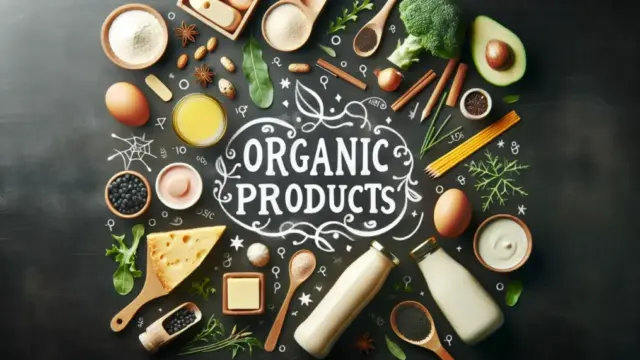Imported coffee brings together carefully selected beans from diverse regions around the globe. This variety is what makes it so appealing, offering a wide range of flavors and aromas to enjoy. In this blog, we’ll delve into the current state of the imported coffee market, upcoming trends, and key points to consider when choosing your beans. We’ll also share insights on roasting, brewing methods, and storage techniques to enhance your coffee experience even further.
For coffee enthusiasts, imported coffee offers a gateway to new experiences. By discovering the right beans and enjoying them in the proper way, you can elevate your coffee life to a whole new level. So, let’s dive in and explore together!
- Discover the current state and future trends of the imported coffee market
- Learn how to choose high-quality coffee and important factors to consider
- Gain insights into roasting, brewing, and storage methods for coffee
Chapter 1: The Current Landscape and Future of Imported Coffee
Imported coffee offers a delightful variety of flavors by bringing together beans from around the globe. Recently, consumer preferences have shifted, with a growing interest in specialty coffee and single-origin brews. In this chapter, we will delve into the current state of the imported coffee market and explore emerging trends. Our aim is to inspire coffee enthusiasts to rethink their choices and ways of enjoying this beloved beverage.
The Current State of the Imported Coffee Market
The imported coffee market is experiencing rapid growth. Consumers are increasingly paying attention to quality and flavor, leading to a surge in the popularity of single-origin and specialty coffees. These coffees are sourced directly from specific regions or farms, boasting unique flavors and aromas. Additionally, advancements in roasting techniques have made it possible to unlock richer tasting notes.
In response to market changes, numerous companies and farmers are embarking on new initiatives. For example, by prioritizing sustainable agriculture and fair trade practices, they are enhancing their commitment to environmental and social responsibility. This movement has garnered consumer support, which will likely further invigorate the market in the future.
- The imported coffee market is rapidly expanding
- Single-origin and specialty coffees are in high demand
- The importance of sustainable agriculture and fair trade
Future Trend Predictions
Looking ahead, the imported coffee market is expected to continue diversifying. Consumers are increasingly seeking distinctive, high-quality coffees, which will draw attention to new varieties and production regions. Moreover, technological advancements are poised to innovate roasting and brewing processes, potentially leading to an even wider array of flavors.
Environmental considerations will also emerge as a significant theme in the market, with a stronger tendency toward sustainable products. This evolution is anticipated to transform imported coffee from a mere indulgence into a product of deeper value. Through their choices, consumers will be able to reflect their lifestyles and values more clearly.

For those who want to dive deeper into the world of coffee, we recommend checking out our article on “How to Choose Specialty Coffee”. It provides detailed insights on selecting and enjoying specialty coffee, helping to enrich your coffee experience even further.
- Further diversification of the imported coffee market is anticipated
- Technological advancements will create new flavor possibilities
- A tendency for consumers to choose sustainable products
Chapter 2: How to Choose Imported Coffee
To truly enjoy imported coffee, it’s essential to select the right beans for your taste. However, with so many options available, it can be overwhelming to determine which brands or origins to choose and how to assess quality. In this chapter, we’ll delve into the nuances of selecting imported coffee, focusing on key points for prioritizing quality and the significance of brand and origin.
Key Points for Assessing Quality
When evaluating the quality of imported coffee, there are several factors to consider. First and foremost, the freshness of the beans is crucial. Choosing beans with a recent roast date enhances the richness of flavor. Additionally, the condition of the beans matters; make sure to check for any chips, cracks, or color inconsistencies to ensure you’re selecting high-quality beans.
Moreover, the aroma and taste of the coffee are vital elements. Conduct tastings to assess the balance of roastiness, acidity, and sweetness. Notably, single-origin coffees can vary greatly in flavor depending on their region of production, making it a delightful journey to discover which profiles suit your palate best.
- Focus on bean freshness
- Check the condition of the beans
- Taste test to evaluate aroma and flavor
The Importance of Brand and Origin
When selecting coffee, the brand and origin play a significant role in your choice. Certain brands are renowned for consistently offering high-quality beans and can serve as reliable indicators during your selection process. Additionally, different regions impart unique flavors and characteristics, so it’s important to understand the coffee culture of each area.
For example, Ethiopian coffee is known for its fruity and floral aromas, while Colombian coffee is celebrated for its well-balanced taste. By finding brands and origins that align with your preferences, you can expand your enjoyment of imported coffee.

If you found this article intriguing, you might also enjoy our piece on “The Allure of Single-Origin Coffee and How to Choose It”. This article offers a detailed look into the characteristics of single-origin coffee and tips for finding the brew that’s right for you.
- Brand selection impacts quality
- Understand the characteristics of different origins
- Enjoy the process of finding your perfect match
Chapter 3: Roasting and Brewing Coffee
To truly appreciate the allure of imported coffee, the processes of roasting and brewing are crucial. Roasting is a significant factor that determines the flavor of the beans, and the right roasting method can really bring out their unique personality. Moreover, how you brew roasted beans can greatly alter the taste, making it essential to find a method that suits your preferences. In this chapter, we’ll take a closer look at the roasting process, its impact, and the best brewing techniques.
The Roasting Process and Its Impact
Roasting is the process of heating coffee beans, which triggers chemical reactions that release their flavors and aromas. During this process, the beans change color and their taste profile evolves. There are different roasting levels—light roast, medium roast, and dark roast—each with its own distinctive characteristics.
For instance, light roasts tend to have fruity notes and a pronounced acidity, showcasing the unique traits of the bean’s origin. In contrast, dark roasts offer a stronger bitterness and a deeper body, perfect for those who enjoy rich flavors. Since the roasting level significantly influences the taste of coffee, it’s important to choose a roast that aligns with your personal preference.
- Roasting is a key process that defines flavor
- The taste differences based on roasting levels
- Choosing a roast that suits your taste is essential
What’s the Best Brewing Method?
The method you use to brew coffee also has a major impact on its flavor. Common brewing techniques include drip, French press, and espresso. Each method has its own characteristics, and selecting the optimal brewing technique based on the type of beans and their roast level is crucial.
For example, the drip method effectively extracts the flavors of the beans, allowing for a clean taste. On the other hand, French press brewing provides a rich, full-bodied flavor, making it an excellent choice for dark roasts. Espresso is a method that produces a concentrated and intense coffee experience, as it brews quickly, capturing the aroma in a short amount of time. Discovering a brewing method that matches your preferences and the occasion can help you maximize the enjoyment of imported coffee.
- Flavor differences based on brewing methods
- Characteristics of drip, French press, and espresso
- Finding the right brewing method for you is important
Chapter 4: Enjoying Imported Coffee
To truly savor the allure of imported coffee, it’s essential to understand proper storage methods and the rich coffee cultures that vary across the globe. Knowing how to store coffee correctly helps maintain its freshness and allows you to fully appreciate its flavors. Additionally, exploring the diverse coffee cultures from different countries and regions can lead to a more enriching coffee experience. In this chapter, we’ll delve into effective storage practices and the fascinating variety of coffee cultures around the world.
The Importance of Storage Methods
How you store coffee significantly impacts its quality. Roasted coffee beans are susceptible to degradation when exposed to air, moisture, and light. Therefore, choosing the right storage method is crucial. Ideally, coffee beans should be kept in an airtight container and stored in a cool, dark place. While refrigeration or freezing can be effective for preserving flavor, it’s important to ensure that moisture doesn’t enter during the thawing process.
When using coffee, it’s best to grind only the amount you need at that moment. Coffee beans naturally lose their aroma and flavor over time, so enjoying them while they’re fresh is key.
- Store in an airtight container in a cool, dark place for best results.
- Refrigeration or freezing can help, but take care to avoid moisture.
- Grind only what you need to maintain freshness.
The Diversity of Coffee Culture and Ways to Enjoy It
Imported coffee allows you to experience a variety of styles that reflect the cultures and customs of different countries. For instance, in Ethiopia, coffee ceremonies are a cherished tradition where friends and family gather to enjoy coffee together. Conversely, in Italy, espresso takes center stage, with a vibrant café culture deeply embedded in daily life. By understanding these regional coffee cultures, you can enhance your appreciation of coffee even further.
Moreover, there are countless ways to enjoy coffee at home. Whether inviting friends over to brew coffee together or holding tastings to compare different beans, these experiences can be incredibly rewarding. Finding your own unique way to enjoy imported coffee can open up a whole new world of flavors and traditions.
- Exploring the coffee cultures of different countries expands your enjoyment.
- Home tastings and coffee ceremonies are great recommendations.
- It’s important to discover a method of enjoyment that suits you.
Conclusion
Importing coffee offers a fantastic opportunity to enjoy its diverse flavors and rich cultures. By understanding the current market landscape and future trends, you can make better choices when selecting your coffee. Knowing how to assess quality and mastering the right roasting and brewing techniques are key to enhancing your coffee experience. Moreover, learning about storage methods and coffee culture will provide you with a broader approach to savoring imported coffee.
Utilize this knowledge to enrich your personal coffee journey. Dive into the allure of imported coffee and embark on a quest to discover your new favorite cup.
- It’s essential to grasp the market and trends surrounding imported coffee.
- Quality, roasting, and brewing methods significantly influence flavor.
- Learning about storage and culture can lead to a more enriching coffee experience.
To elevate your coffee life further, be sure to try out some new imported coffees. We’d love to hear your thoughts and favorite recommendations in the comments!












































































Comment